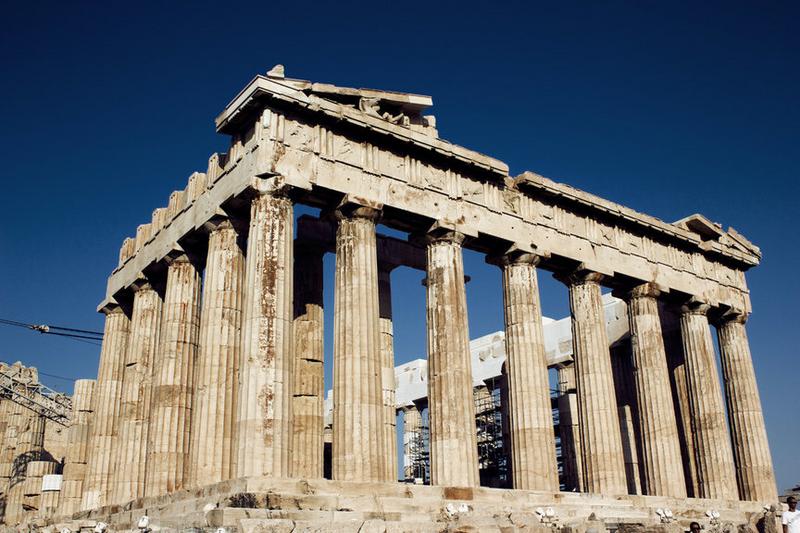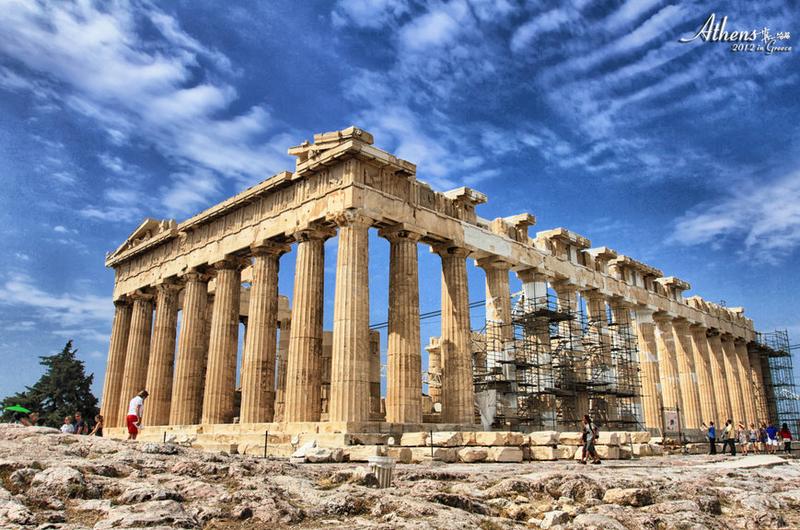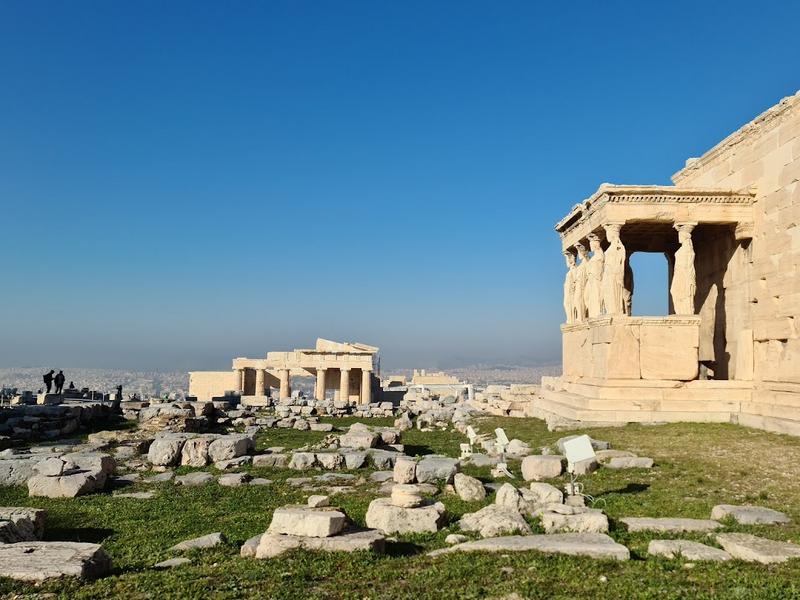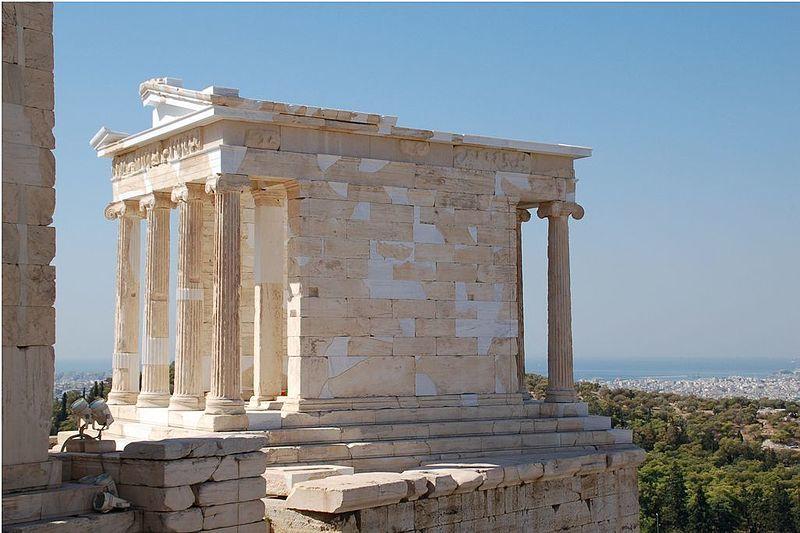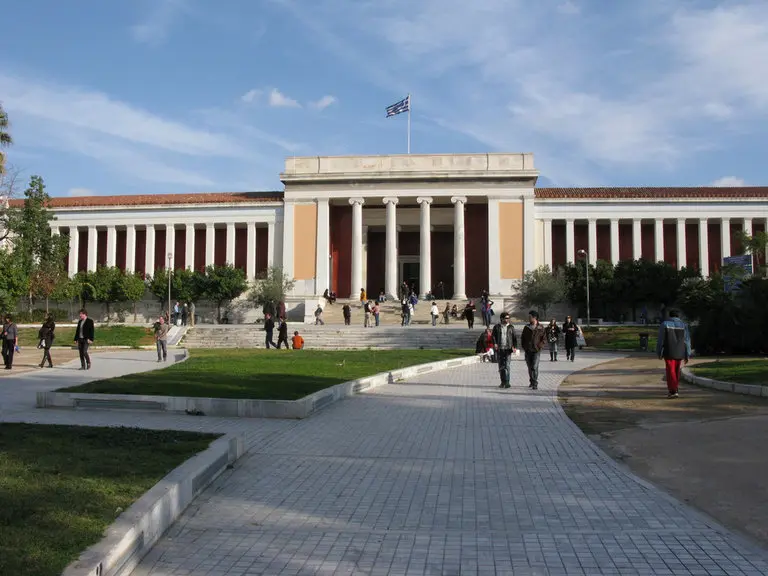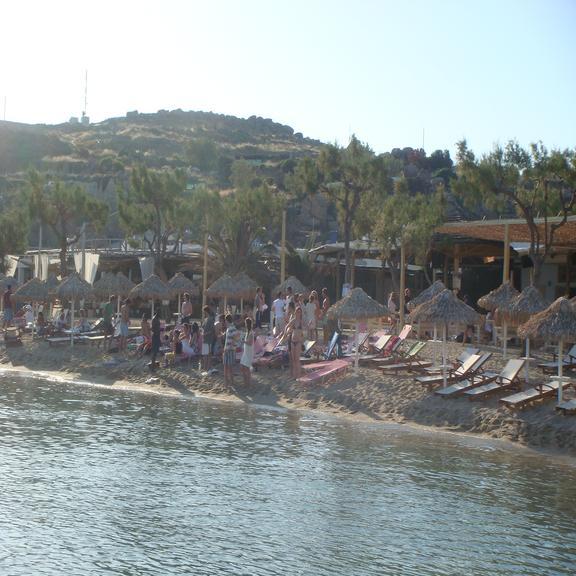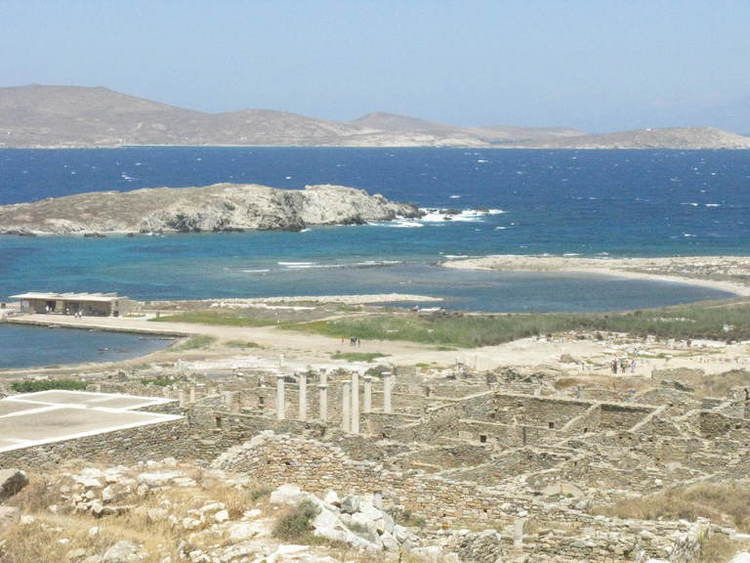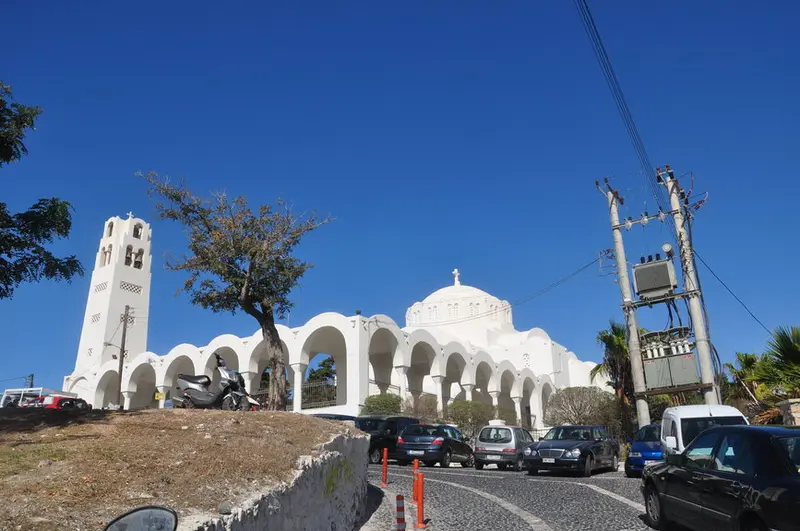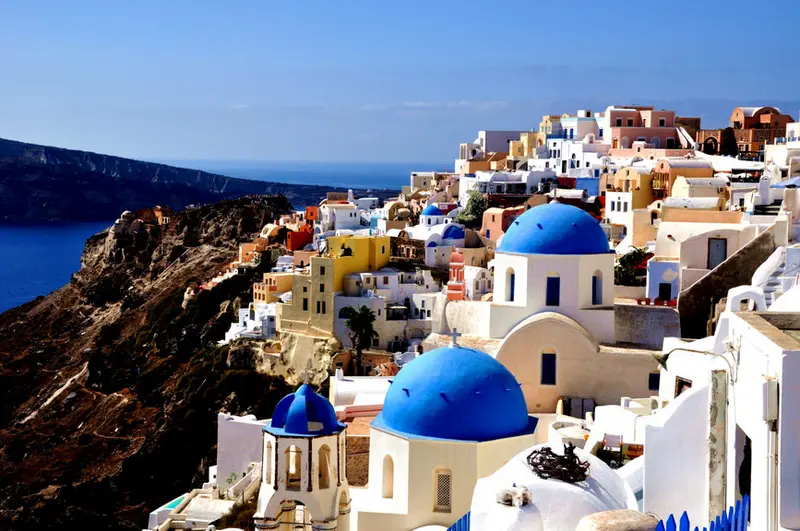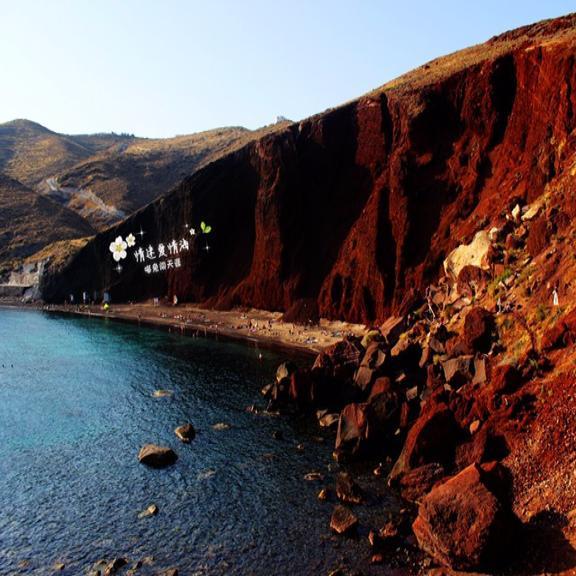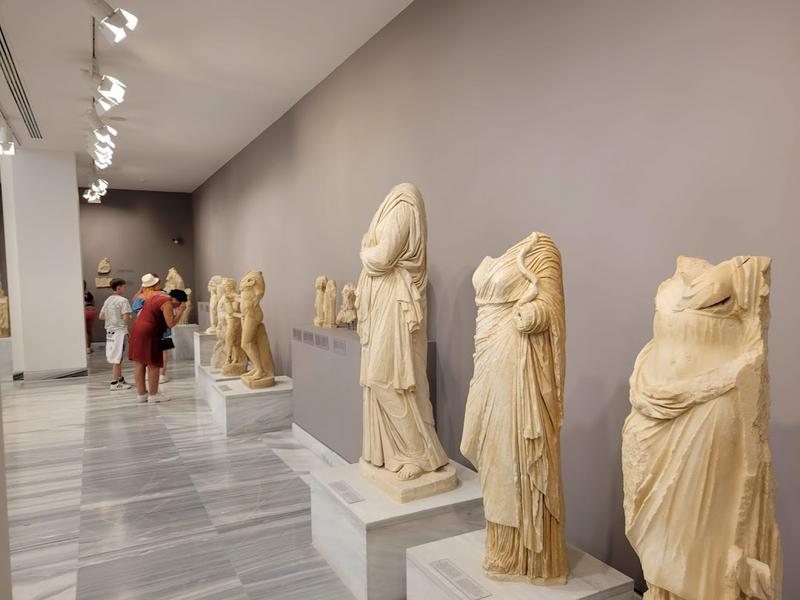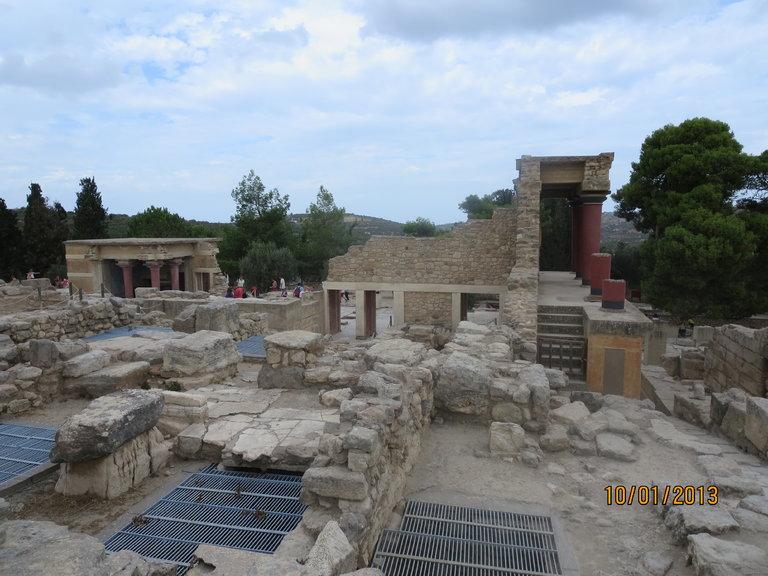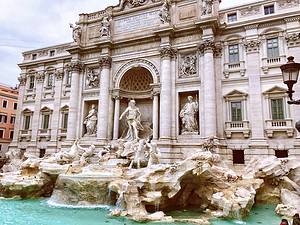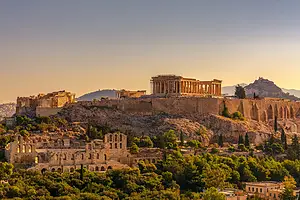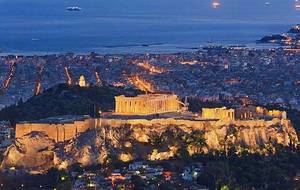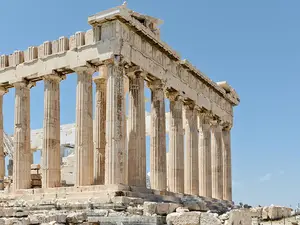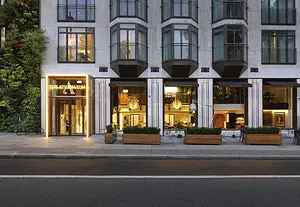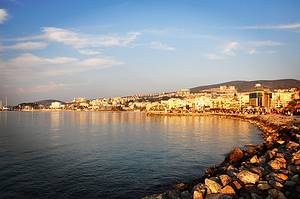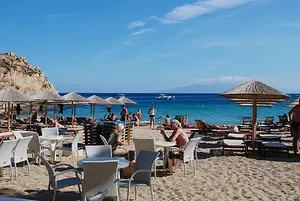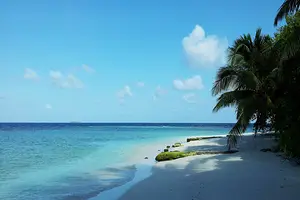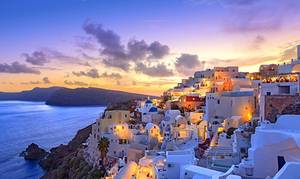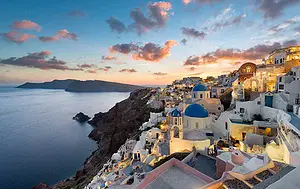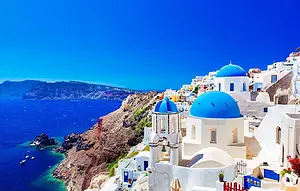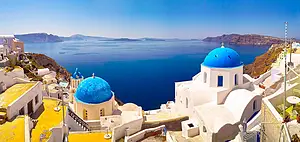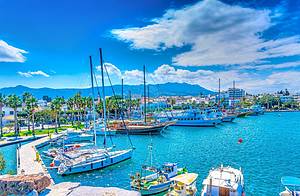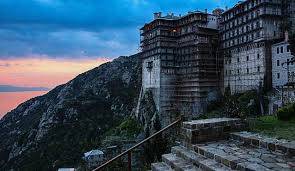7-Day Greek Adventure
4 cities |
17 attraction(s) |
total distance 424
km
 TIPS
TIPS
Day1
Day2
Day3
Day4
Day5
Day6
Day7
Day1: Athens
5 attraction(s) ·
1 km
1
The Acropolis of Athens is Greece's most outstanding ancient architecture group, built in 580 BC and located on the Acropolis hill in the center of Athens. The ancient city covers an area of 4 square kilometers and is protected by strong city walls. The Acropolis was the center of religion and politics, and its buildings include the Temple of Athena, the Temple of Poseidon, and the Temple of Erechtheion, reflecting the culmination of ancient Greek architecture and sculpture. The buildings within the Acropolis, such as the front gate, mountain gate, Temple of Athena Victory, and Temple of Artemis, contain the essence of ancient Greek civilization. The Temple of Poseidon is the most famous building and one of the Seven Wonders of the Ancient World, originally a temple of primitive religion. The Acropolis Museum has a rich collection and preserves all the artifacts unearthed on the Acropolis, providing valuable materials for the study and development of ancient Greek sculpture. The Acropolis of Athens was a refuge for citizens during wartime in ancient Greece, protected by strong walls and surrounded by cliffs on the east, south, and north. Today, the Acropolis of Athens attracts countless visitors to admire this pinnacle of architectural art.
1
km
2
Walking into the entrance of the Acropolis of Athens, visitors will come to the Propylaea and, looking to the right, will see the famous Temple of Olympian Zeus. The temple, built of white marble, is 70 meters long, 31 meters wide, and 10 meters tall, and features beautiful carvings of Greek mythology on its roof and walls. In ancient times, the temple housed a gold and ivory statue of Athena, the patron goddess of Athens, but unfortunately they are now only a memory. Apart from its grand appearance, the temple is also a great example of classical architecture and proportion. However, the great building suffered many losses in the course of history, with many exquisitely crafted sculptures stolen and the temple itself damaged when Turkey occupied Greece.
1
km
3
Honoring Athena & Poseidon, this famous, ancient Greek temple features a porch with 6 caryatids.
1
km
4
The Temple of Athena Nike is a charming temple located on the Acropolis of Athens. The temple's name in English, "Nike", derives from the Greek word for victory, and it has always been one of the centers of attention for the ancient Greek public, where people worshiped the goddess of victory and wisdom - Athena. During the long period of war between Athens and Sparta, Athenians often came here to pray for victory.
1
km
5
Day2: Athens
2 attraction(s) ·
2 km
1
The National Archaeological Museum is one of the largest and most precious ancient artifact museums in Athens, providing visitors with an opportunity to deeply understand ancient Greek history and culture. Although the appearance of the museum is unassuming and the interior decoration is relatively simple, it is renowned for its priceless collection of artifacts. Nearly 20,000 precious artifacts, such as the golden mask of Agamemnon, the bronze statue of the sea god Poseidon, and the mural of the boxing boy, are carefully displayed in fifty exhibition rooms on two floors. In addition to admiring the precious artifacts, visitors also have the chance to learn about Greek history, art, and culture. If time is limited, it is recommended to select the main exhibits to ensure that you see the most brilliant treasures of the museum.
2
km
2
This is the square of the Greek Parliament building, which is the gathering place for various political processions. The unnamed martyrs' tombstone below is guarded by two soldiers in traditional Greek costumes. They perform a changing of the guard ceremony every hour, which is also one of the most popular photo spots for tourists.
Day3: Mykonos
2 attraction(s) ·
1 km
2
Mikosno Island features prominent shops and restaurants, which are facing the sea and attract attention. Some of these shops are built in a Venetian style and even sit on water, hence their name.
Day4: Mykonos
2 attraction(s) ·
12 km
1
The famous naturist beach on the island was once a gay beach, but now it has become a public beach and a must-see for tourists.
12
km
2
Delos Island derives from the Greek word, meaning "bright and shining," and it is said to be the birthplace of the sun god Apollo and the moon goddess Artemis. This small island is located about 4 kilometers southwest of Mykonos Island and is the smallest one in the Cyclades group of islands. According to legend, Zeus once used four of his own hairs to support the island, allowing it to float above the sea. What's even more interesting is that some claim that if you were to dive around the waters surrounding Delos Island today, you would be surprised to find that the structures match the descriptions in the myths and legends.
About 2700 years ago, Delos Island was the center of religious and commercial activities during ancient Greece, but today, only a few ruins remain.
Day5: Santorini
2 attraction(s) ·
7 km
1
Fira Town is a small town located on the edge of a volcano, 400 meters above sea level, on the west side of the island of Santorini, Greece. Like other small towns, it also has beautiful white houses and many shops, hotels, and restaurants. Here, you can easily find banks, buses, and taxis, and it is also the capital and one of the busiest towns of Santorini Island. Fira Town has the most charming sea views on the island and is also one of the best places to view the volcano scenery. Many movies and TV works have also been filmed here, such as "Tomb Raider 2".
7
km
2
Located in the north of Santorini Island, Oia is renowned for its stunning sunsets. When the sun starts to set, visitors flock here to find the best viewing spot and sit silently for an hour, watching the sun slowly descend until it disappears on the horizon. As the sun sinks, visitors cannot help but admire and applaud, praising the beauty of the sunset. This magnificent view is also loved by many artists and photographers. The white houses, blue-roofed churches, and traditional windmills are particularly enchanting in the glow of the sunset.
Day6: Santorini
2 attraction(s) ·
1 km
2
In the south of Santorini, there is a beach known as a myth-like red sand beach. It is named after its fine red sand and adjacent cliffs. Tourists can enjoy activities such as sunbathing, swimming, and beach volleyball on the red sand beach. In addition, there are many bikini-clad beauties and surfers spending their vacations here. It is both vibrant and charmingly alluring.
Day7: Heraklion
2 attraction(s) ·
5 km
1
Museum displaying artifacts from the Minoan age, plus Cretan art, sculptures & archaeological finds.
5
km
2
The Palace of Knossos is located about 5 kilometers from Heraklion. According to myth, it was a place where King Minos kept the Minotaur. In the early 20th century, the British archaeologist Arthur Evans began excavating the site. It took 35 years to partially excavate and reconstruct the palace, which sparked controversy. Today, the Palace of Knossos remains a popular tourist destination.
